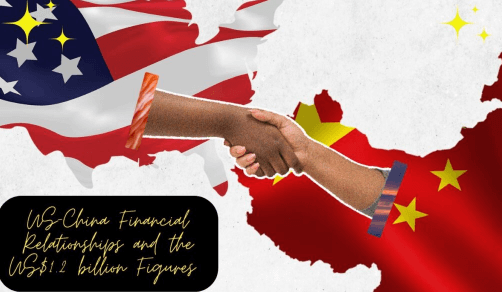Counterpoint 1.2b Us Chinabradshaw Financialtimes

The intricate relationship between the Counterpoint 1.2b Us Chinabradshaw Financialtimes presents both opportunities and challenges that warrant careful examination. As economic competition intensifies, the strategies employed by both nations are reshaping not only bilateral trade but also the broader global economic landscape. Understanding the key economic indicators and challenges that each country faces will be critical in forecasting future trends. Yet, the potential for collaboration amidst rivalry raises important questions about sustainable growth and international stability that deserve further exploration.
Overview of US-China Relations
How have US-China relations evolved in recent years?
Increasing trade tensions have characterized the bilateral relationship, prompting both nations to reassess their diplomatic strategies.
The United States has adopted a more confrontational stance, focusing on economic competition and national security concerns.
Meanwhile, China seeks to assert its influence globally, leading to a complex interplay of cooperation and rivalry that shapes international dynamics.
Key Economic Indicators
As the dynamics of US-China relations continue to shift, key economic indicators have become increasingly significant in understanding the broader implications of their interactions.
GDP growth rates, trade balance figures, and inflation rates reveal underlying economic health.
Employment trends and currency fluctuations further impact investment flows, dictating market responses.
These indicators collectively shape the geopolitical landscape, influencing policy decisions on both sides.
Read Also Countersuit Cto Jerry Talton Wardvandermeybloomberg

Challenges Facing Both Economies
The complexities of US-China relations are underscored by significant challenges facing both economies.
Trade tensions have escalated, impacting market confidence and investment flows.
Additionally, disruptions in the supply chain have highlighted vulnerabilities, prompting both nations to reconsider their dependencies.
These challenges not only strain bilateral relations but also threaten global economic stability, emphasizing the need for strategic adjustments in policy and trade practices.
Future Collaboration Opportunities
Amid the backdrop of escalating trade tensions and supply chain disruptions, opportunities for collaboration between the United States and China remain viable and necessary.
Strategic trade agreements can facilitate economic growth, while technology exchange fosters innovation and competitiveness.
Conclusion
The intricate tapestry of Counterpoint 1.2b Us Chinabradshaw Financialtimes, woven with threads of competition and cooperation, underscores the necessity for strategic engagement. As both nations navigate economic turbulence, the potential for collaboration glimmers like a distant lighthouse, guiding global economic stability. Embracing dialogue and partnerships may transform current rivalries into opportunities for shared growth, fostering a more harmonious international landscape where mutual interests illuminate the path forward, ultimately contributing to a balanced global economy.





